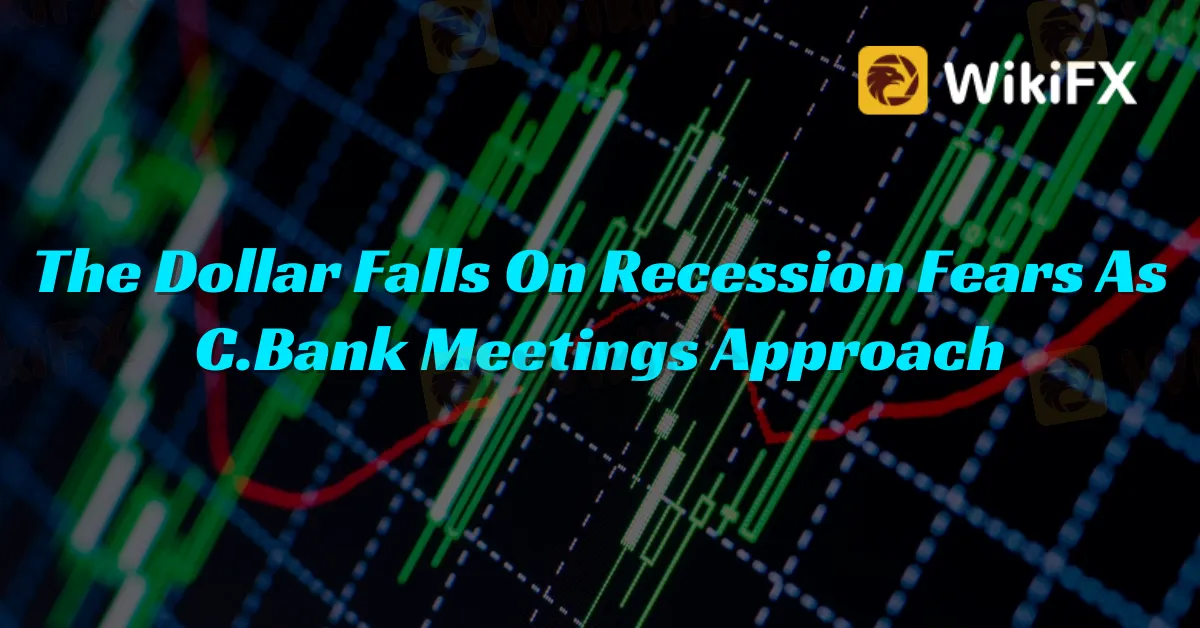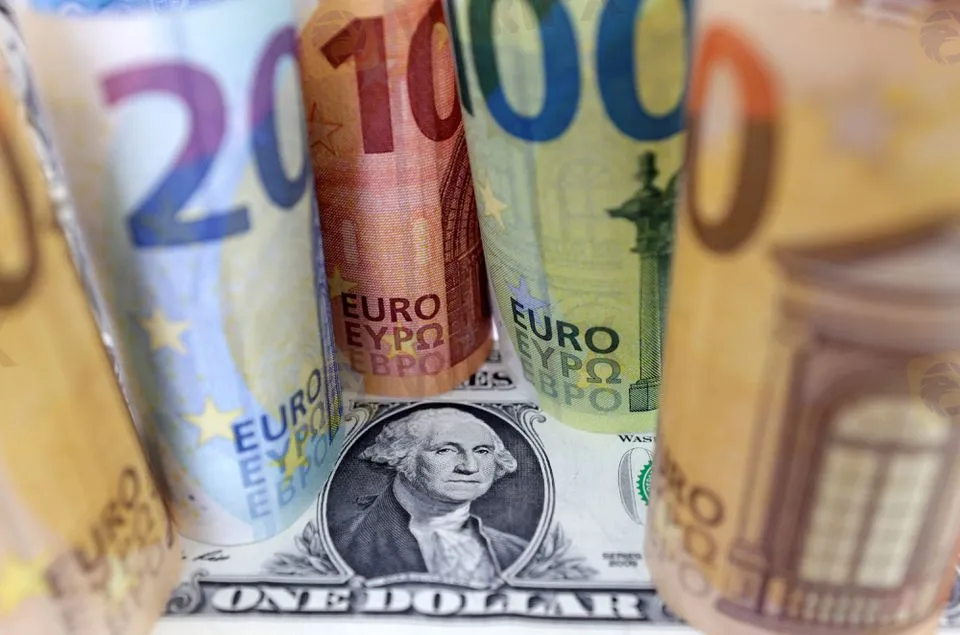简体中文
繁體中文
English
Pусский
日本語
ภาษาไทย
Tiếng Việt
Bahasa Indonesia
Español
हिन्दी
Filippiiniläinen
Français
Deutsch
Português
Türkçe
한국어
العربية
The Dollar Falls On Recession Fears As C.Bank Meetings Approach
Abstract:The dollar fell on Friday as concerns about a US slowdown grew, with markets on high alert ahead of a spate of central bank meetings next week, with the Federal Reserve taking center stage.

The dollar fell on Friday as concerns about a US slowdown grew, with markets on high alert ahead of a spate of central bank meetings next week, with the Federal Reserve taking center stage.
The euro surged over 0.5% against the US dollar overnight, closing close on a six-month high reached the start of the week. It was recently 0.23% higher at $1.0579 and is on pace for a third consecutive week of gains.
Sterling also gained 0.23% overnight, closing at $1.22695, not far from Monday's six-month high of $1.2345. The Japanese yen increased by 0.4% to 136.04 per dollar.

The number of Americans submitting new claims for unemployment benefits grew marginally last week, according to figures released on Thursday, with continuing claims reaching a 10-month high in late November, fueling worries that the world's biggest economy may face a recession next year.
“We've got a very difficult forecast the next year, which is playing into traders' thinking process. We're looking...at considerably weaker growth internationally, lower growth out of the U.S. as well,” said Jarrod Kerr, chief economist at Kiwibank.
After falling 0.3% overnight, the US dollar index slipped 0.27% to 104.53.
This quarter, it has dropped about 7%, putting it on course for the greatest quarterly drop since 2010.
“It's (also) very much positioning right now,” Kerr noted, referring to the Federal Reserve's policy meeting next week.
Money markets are pricing in a 93% likelihood of the Fed raising rates by 50 basis points, with rates now expected to peak at just under 5% in May.
Expectations that the Fed would slow the pace of interest rate rises and that rates may not climb as high as originally anticipated have knocked the dollar more than 8% off its two-decade high versus a basket of currencies, which was reached in September.
U.S. Treasury yields Treasuries have also fallen, with the two-year yield, which often reflects interest rate forecasts, recently trading at 4.3035%, down from a 15-year high of over 4.9% last month.

A region in the United States that is carefully monitored. The Treasury yield curve, which measures the difference in rates between two- and ten-year Treasury notes, was inverted at -83.7 basis points.
An inversion of this yield curve is usually a sign of impending recession.
The European Central Bank and the Bank of England will both make monetary policy decisions next week, with markets looking for clarity on the outlook for 2023.
The Australian dollar was up 0.4% at $0.6797, while the New Zealand dollar was up 0.42% at $0.6407.
Because they are often used as liquid proxies for the Chinese yuan, the antipodean currencies have benefited from China's recent relaxation of its harsh COVID regulations.
The offshore yuan gained more than 0.2% against the dollar, reaching 6.9424.
“The China reopening theme is a huge one, particularly (coming) from a low base,” said Christopher Wong, a currency strategist at OCBC.
“Chinese assets were badly oversold prior to the current comeback. More reallocation back to RMB-assets would boost RMB.”
Stay tuned for more Forex News.
Download the WikiFX App from the App Store or Google Play Store to stay updated on the latest news. Also available for Windows Computer
Dowload link: https://www.wikifx.com/en/download.html

Disclaimer:
The views in this article only represent the author's personal views, and do not constitute investment advice on this platform. This platform does not guarantee the accuracy, completeness and timeliness of the information in the article, and will not be liable for any loss caused by the use of or reliance on the information in the article.
Read more

The Daily Habits of a Profitable Trader
Every professional trader follows a structured approach to ensure they are well-prepared, disciplined, and able to seize opportunities with confidence. Whether you are a seasoned investor or an aspiring trader, adhering to a robust daily checklist can significantly enhance your performance. Use this checklist to check if you are a qualified trader

The Impact of Interest Rate Decisions on the Forex Market
Interest rate changes determine currency attractiveness, influencing capital flows and exchange rate trends. Understanding this mechanism helps investors navigate the forex market effectively.

How a Housewife Lost RM288,235 in a Facebook Investment Scam
A 47-year-old housewife in Malaysia recently fell victim to an online investment scam, losing a substantial sum of RM288,235 after engaging with a fraudulent scheme advertised on Facebook.

A Trader’s Worst Mistake: Overlooking Broker Reviews Could Cost You Everything
In today’s digital age, reviews influence nearly every decision we make. When purchasing a smartphone, television, or home appliance, we pore over customer feedback and expert opinions to ensure we’re making the right choice. So why is it that, when it comes to choosing an online broker where real money and financial security are at stake many traders neglect the crucial step of reading reviews?
WikiFX Broker
Latest News
The Withdrawal Trap: How Scam Brokers Lure Victims into Paying More
FCA to Investors: Think Twice Before Trusting These Brokers
Trump\s tariffs: How could they affect the UK and your money
Trump gambles it all on global tariffs he\s wanted for decades
TradingView Brings Live Market Charts to Telegram Users with New Mini App
Trump tariffs: How will India navigate a world on the brink of a trade war?
Interactive Brokers Launches Forecast Contracts in Canada for Market Predictions
Authorities Alert: MAS Impersonation Scam Hits Singapore
Stocks fall again as Trump tariff jitters continue
IG Group Acquires Freetrade for £160M to Expand UK Investment Market
Currency Calculator







